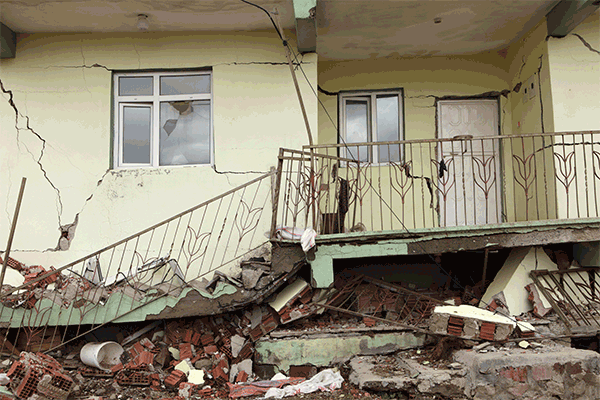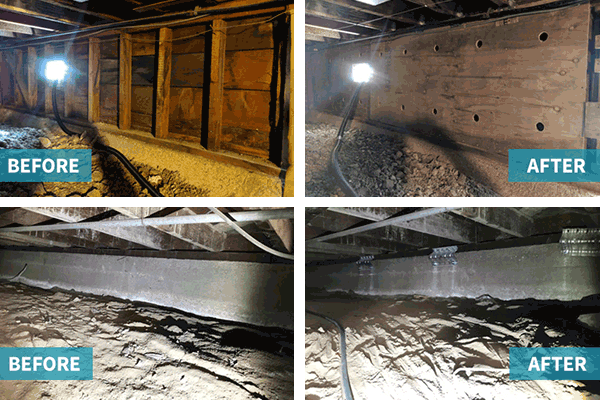What are Building Codes?
According to the National Institute of Standards and Technology, building codes are “laws that set minimum requirements for how structural systems…and other aspects of residential and commercial buildings should be designed and constructed.”
In California, we have a state-wide building code that must be adopted by all jurisdictions. Local governments can add items specific to their communities, such as brace and bolt retrofit requirements, but they cannot make the code less stringent or fail to adopt parts of the CA building code.
It may be helpful to think of building codes as the rules that must be followed when building a new home, or modifying an older house that may be vulnerable to earthquake damage. California’s rules include specific seismic requirements to ensure that homes are more resilient against earthquake shaking. This includes, but is not limited to, wood-framed homes, post and pier houses set on tall narrow posts or columns, and homes with living spaces above garages – also called soft story homes. This set of rules is sometimes referred to as California’s “Seismic Codes.”
California’s Seismic Codes
California’s seismic codes are designed to better protect people from being hurt during earthquakes. There’s a popular saying, “earthquakes don’t kill people, buildings do.” Seismic codes are designed to help prevent buildings from doing that.
The City of Oakland reports that “the California Building Standards Code is revised and updated every three (3) years.” The California Building Standards Code includes rules that are specifically about how to make buildings more earthquake resistant, and these earthquake-specific rules are known as seismic codes.
Seismic Codes vs. Seismic Ordinances
Seismic ordinances are different from seismic codes. Seismic codes are the set of rules that must be followed when building a new home, and they apply throughout the state.
Seismic ordinances are laws created by local governments to mandate seismic safety standards in addition to California’s state seismic codes. They only apply within the city or county where they were passed, and they can’t contradict the state codes. Following seismic ordinances can better strengthen your house against earthquake damage, financially protect your investment, and sometimes even lower your earthquake insurance premium.
In other words, while all of California’s buildings must follow current California seismic codes at the time of their construction, seismic ordinances can be passed later to require that those buildings are updated based upon new rules put in place by local counties or cities.
You can think of seismic ordinances as emergency measures used to address safety flaws discovered in existing buildings, including homes. For example, the Loma Prieta earthquake of 1989 damaged about 27,000 structures and significantly influenced the development of seismic ordinances. Seismic ordinances can include provisions requiring earthquake retrofits.
Why Seismic Codes & Ordinances Matter
Seismic codes and ordinances are vital to protecting public safety in California, where earthquake probabilities remain high.
As FEMA explains, these codes are “intended to ensure that structures can adequately resist seismic forces during earthquakes,” limiting the risk of damage and injury.
City-Specific Residential Seismic Building Codes
California cities and counties are able to issue their own seismic codes. These requirements vary by location, so it’s important to become familiar with the construction rules where you live.
Here are some helpful links to information about seismic codes and ordinances in some of California’s largest cities and counties:
- Los Angeles Building Codes
- San Francisco Earthquake Safety Rules
- San Jose Building Codes
- Oakland Seismic Safety
- San Diego Building Codes
Keep in mind that cities and counties can also update their seismic codes or issue new ordinances to develop seismic resilience. For example, following the devastating 2023 earthquakes in Turkey and Syria, Los Angeles County voted to “update the county’s building code and require all non-ductile high-rises to be retrofitted within 10 years.”
To verify that your home complies with state and local seismic regulations, we recommend scheduling an onsite visit with a licensed contractor or structural engineer who can help you find out if the structural elements of your home need reinforcing.
Visit our guide to find a contractor in your area who is licensed and educated in seismic retrofitting.
Common Earthquake Retrofits
There are a variety of seismic retrofitting techniques that can be used to strengthen your home and make it more resistant to earthquake damage.
Some California homes are particularly vulnerable to earthquakes, including raised foundation homes built before 1980, when meaningful building codes were first put in place.
In California, the following homes may require a seismic retrofit:
- Raised Foundation Homes
- Homes with Living Spaces Over Garages (“Soft-Story” Homes)
- Homes Built on Steep Slopes or Hillsides
- Post & Pier Homes
- Mobilehomes & Manufactured Homes
- Homes with Unreinforced Masonry, Chimneys & Fireplaces
If your home falls under any of these categories, we can help you make a plan, find a contractor, and try to secure funding opportunities for a seismic retrofit.
Visit our Next Steps page for detailed advice about how to strengthen your home.
Assessing Your Home’s Risk of Earthquake Damage
While earthquakes cannot be predicted, the latest science tells us that California faces a 99% chance of experiencing one or more major earthquakes in the next 30 years.*
To help put your threat from earthquakes in perspective, read about the most common types of earthquake hazards and find out about how earthquakes cause damage and destruction.
Then review your local earthquake fault risk by visiting the USGS's interactive fault map.
How to Keep Yourself & Your Family Safe
Seismic codes are designed to help protect your home and your loved ones from earthquake damage. Hiring an expert to verify that your home is compliant with current codes and ordinances is an important step to make sure you are prepared for the next quake.
In addition to making sure that your home is up to seismic code, we also suggest creating an earthquake emergency preparedness plan. Your plan should include reading the 7 essential earthquake safety tips and building an earthquake emergency kit.
For additional information about retrofits, visit our guide to earthquake retrofits, find out how much a CA retrofit costs, learn how to determine if a retrofit is really worth getting, and finally, read about how to pay for an earthquake retrofit.
Remember that earthquake preparedness can save lives, and that the best time to prepare for the next big California earthquake is before the ground begins to shake!
Visit our Seismic Strong Blog for more tips, advice and information about earthquakes.
Frequently Asked Questions
Below, we share answers to some of the most common questions California homeowners ask about seismic safety and code compliance.
What are the U.S. Seismic Categories?
Seismic Design Categories are a classification assigned to a structure based on its risk category and the severity of the design earthquake ground motion at the site where that structure is built.
What Code is Used for Seismic Retrofit Design?
California’s Existing Building Code, Appendix A: Guidelines for the Seismic Retrofit of Existing Buildings, provides guidelines for upgrading the seismic-resistance capacity of different types of existing buildings.
Are Seismic Retrofits Mandatory?
All California jurisdictions allow voluntary structural strengthening (earthquake retrofitting), and some have mandatory programs. Contact your local County or City Building Department for details on retrofit requirements in your area.
How Are Building Codes Enforced?
Local jurisdictions are responsible for enforcing California’s building codes. For specific information about how codes in your area are enforced, contact your local County or City Code Enforcement Department.
Does Every City Have a Seismic Ordinance?
No. Some cities do not have their own seismic ordinances, but all California cities and counties must follow the state’s building codes, including its seismic codes.
How Do I Get a Seismic Retrofit?
To get a seismic retrofit, first you should identify your house type and its seismic vulnerabilities. This will help you determine what type of retrofit is needed so that you can make a plan to carry out the work. Visit our Next Steps page for detailed recommendations on the retrofitting process.
*According to the third Uniform California Earthquake Rupture Forecast (UCERF3) report.




